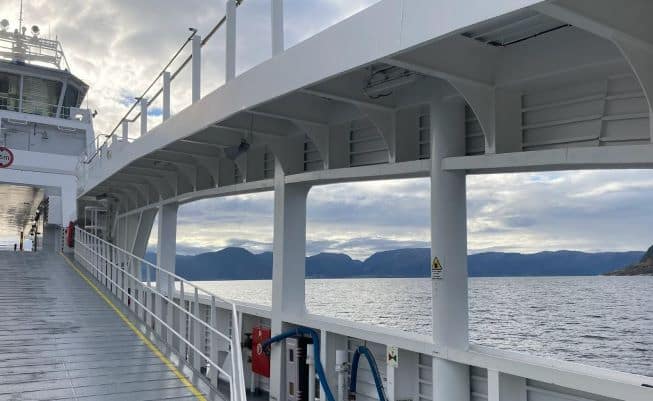Green corridors was one of the highlights at COP26 two years ago, launched through the Clydebank Declaration.
What has happened since and why is it important?
Green shipping corridors are zero-emission shipping routes between 2 ports.
The shipping industry is responsible for 2.5 – 3 per cent of global CO2 emissions, a figure that could rise to 17% by 2050 if left unregulated. We need to take huge steps to go from small electric ferries to large cargo ships crossing the world’s oceans.
Green corridor tracker
You don’t need to do all the research yourself to find out how things are going. The Mission Innovation has a Route Tracker where you can check. By the way, such trackers fuel my hope that there are important, significant things happening too, to fix the climate crisis.
Another reason not to give up is the C40 Cities coalition. Creating special economic zones at sea to support an enabling ecosystem for the uptake of new technologies, clean fuels, and innovative business models, is part of the coalition ambitions.
Since 2021 a number of green corridors efforts have been launched.
Last week, the Ports of Los Angeles, Long Beach and Shanghai announced the first-ever green shipping corridor across the Pacific. As part of the plan, the carrier partners will begin deploying reduced or zero lifecycle carbon capable ships on the corridor by 2025, and work together to demonstrate by 2030 the feasibility of deploying the world’s first zero lifecycle carbon emission container ship(s). Another long corridor in the making is between Rotterdam and Singapore.

What does the world’s first electric ferry look like?
I am on a ferry on the Sognefjord in West Norway, Ms Ampere. It’s clouded, some rain and 9 degrees celsius. I can see a snow-covered mountain as a few rays of sunlight break through the clouds. Very little sound from the engine, no exhaust.
Declarations and reality – Lloyd’s List
Lloyd’s List follows green corridors progress closely. Here are some recent news about how things are going:
- There were around 30 green corridor project announcements since the Clydebank Declaration was signed in November 2021, although most of them remain in feasibility phase.
- Promises made at COP26 to get at least six green corridors established by 2025 are in danger of being broken as financing fails to materialise, feasibility studies falter and regulatory uncertainty pushes back projections.
- The UK government will allocate £1.5m for green corridor feasibility studies. The UK is involved in at least two important green corridor projects that are still in their development phase, however a lack of alternative fuels and vessels that can run on such fuels is stalling progress.
- Yara Clean Ammonia and MPC join LR’s Singapore green corridor project. Addition of ammonia producer and boxship owner points to progress, but it is still early days.
- Green corridors ‘will confirm the feasibility and scalability of alternative fuels. Still a lot of work to be done to determine which will be the main new fuels for use in future, says Cargill lead.
What is Lloyd’s List? “What started life in 1734 as a notice pinned to a coffee shop wall in London is now the shipping industry’s most sophisticated source of online news, analysis and insight.”
Finally, small island states appeal that they are not left behind as green shipping corridors emerge. “[Green corridors] need to be about building resilience of port infrastructure and the communities that surround them and keep them running.”
Green shipping corridors must not strand island states – Climate Champions (unfccc.int)


